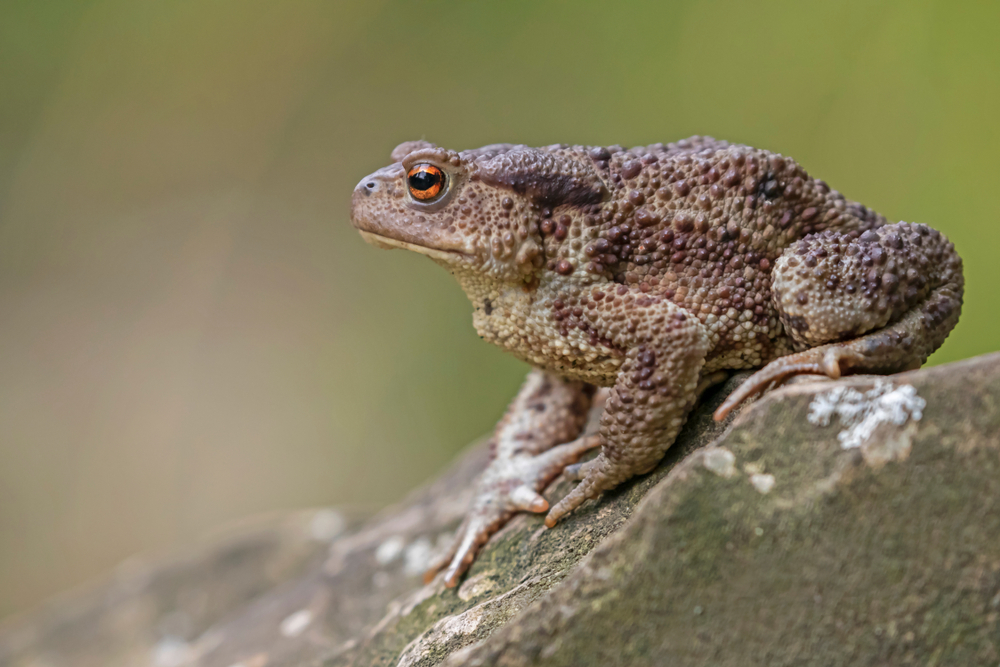Uniqueness
Mass Migration and Site Fidelity:
One of the most remarkable traits of the common toad (Bufo bufo) is its annual mass migration to ancestral breeding ponds. Toads show strong site fidelity, returning to the same pond each year—even if it means crossing roads or traveling long distances. This instinctual navigation behavior is triggered by environmental cues like temperature and humidity.
Parotoid Glands and Chemical Defense:
Common toads possess large parotoid glands located behind their eyes that secrete a mildly toxic substance called bufotoxin. This defense deters many predators by producing a bitter taste and mild irritation. Though generally harmless to humans, the toxin can be dangerous to small animals or pets.
Dry, Warty Skin:
Unlike frogs, toads have dry, rough, warty skin, which helps minimize water loss and allows them to live farther from water sources. Their appearance provides excellent camouflage against forest floors and leaf litter.
Terrestrial Lifestyle:
The common toad spends most of its life on land, often in gardens, woodlands, and under logs or stones. It is less dependent on water than many amphibians, only returning to aquatic environments for breeding.
Long Lifespan and High Site Loyalty:
Compared to many amphibians, common toads have a longer lifespan, often exceeding 10 years in the wild. Their strong homing ability and survival instincts contribute to this longevity.
Nocturnal Ambush Predator:
Toads are specialized for night hunting, using stealth and their sticky tongue to ambush prey. Their ability to stay still for long periods conserves energy and makes them effective insectivores.
Hibernation and Burrowing:
In colder months, common toads hibernate underground or beneath logs and leaf litter. They are skilled burrowers and can dig backward into loose soil to escape extreme temperatures or drought.
Summary:
The common toad is a unique amphibian adapted to terrestrial life, with features like chemical defense, annual migrations, and long lifespans. Its behaviors and physiology set it apart from frogs and highlight its ecological importance in temperate environments.



































































